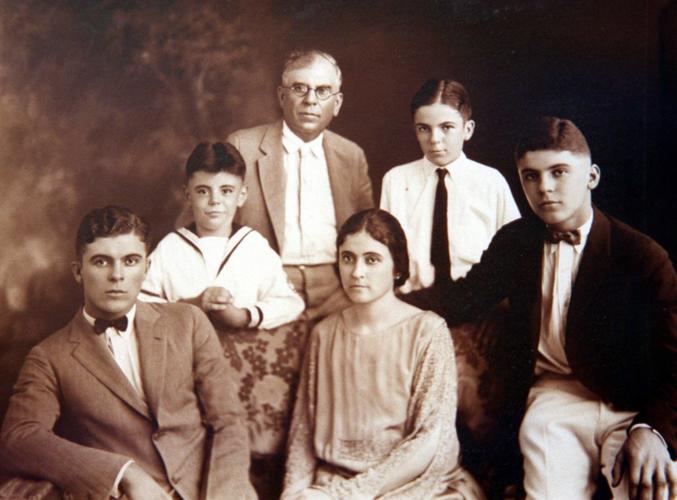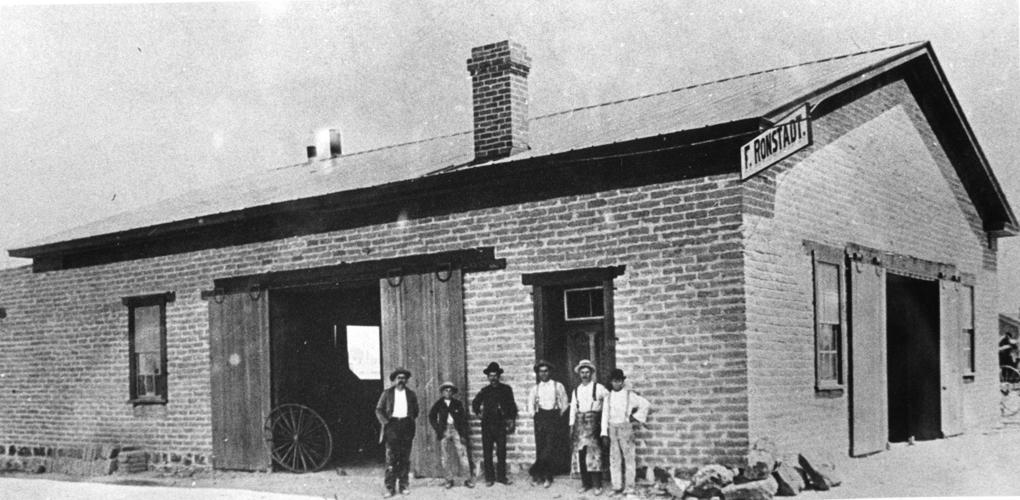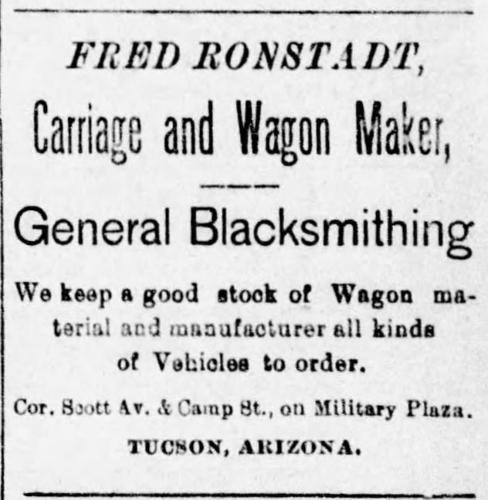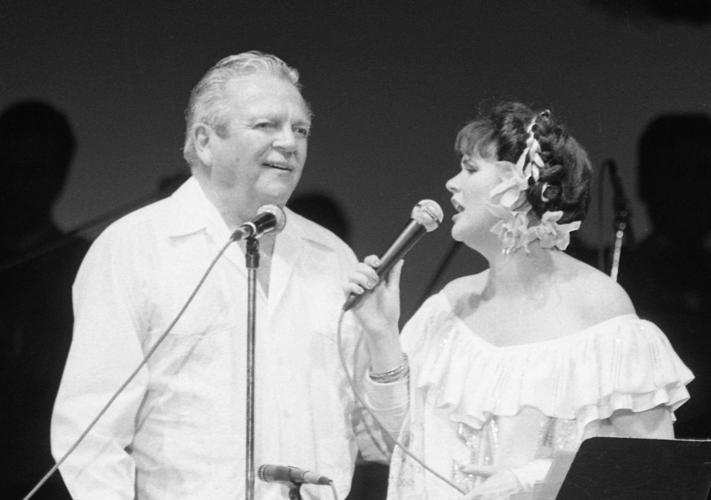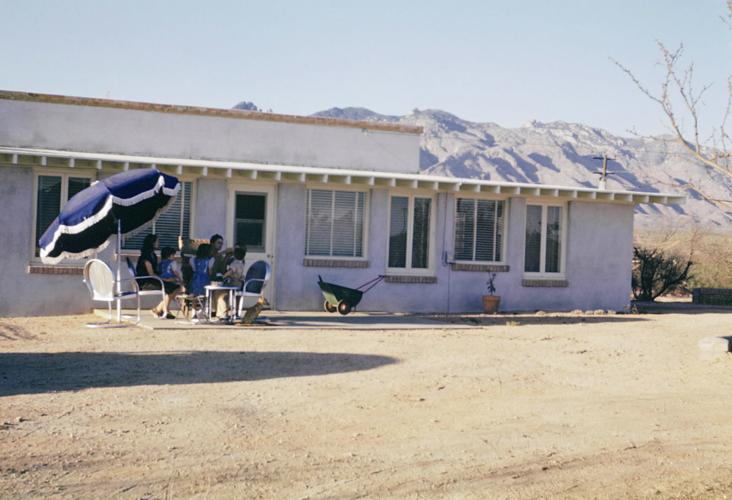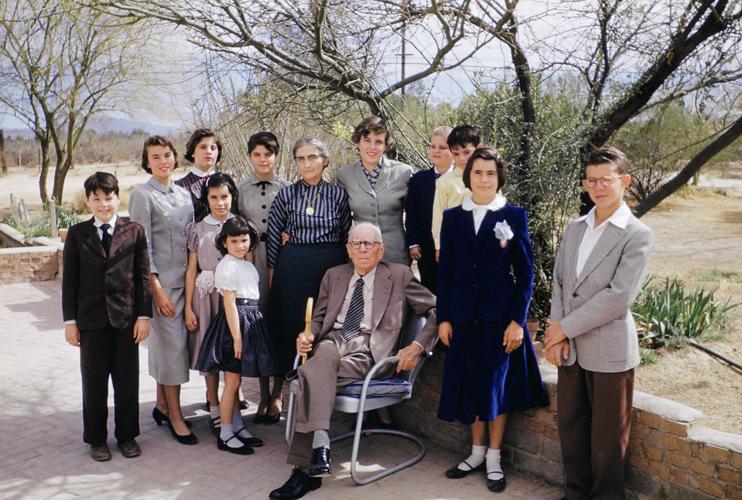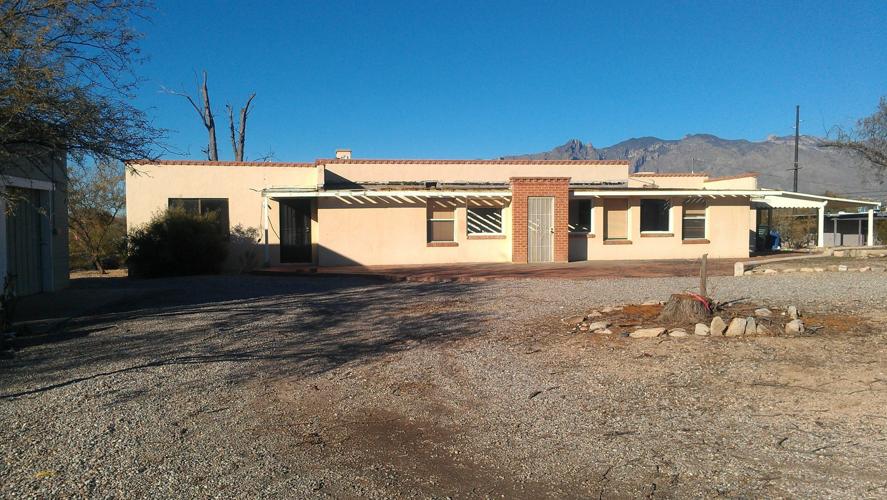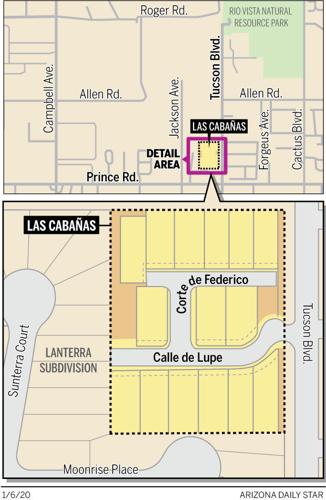The Ronstadt family’s prominence in the Old Pueblo seemed far distant when the first family member arrived in humble circumstances.
In 1882, Federico J.M. “Fred” Ronstadt, then 14 years of age, traveled with his father in a mountain wagon from Magdalena, Sonora, where they lived, to Tucson in the Arizona Territory.
Here, the teen was to apprentice in the blacksmith and wagon making trade at the Dalton & Vasquez carriage shop on Meyer Street just south of Ochoa Street.
Sometime after crossing into the U.S., his father, Frederick, a German-born mining engineer, told him something he would never forget:
“Now you are in the United States of America, without any question the greatest nation in the world. You will enjoy great liberty and protection under the American government and you must always feel and show deep affection for that. When you become a man, you may want to establish yourself in the United States. See that your life and your conduct are such as will entitle you to the privilege of American citizenship.”
For the first three years of his apprenticeship, Ronstadt wasn’t paid at all. The fourth year, he made $8 per week plus room and board, and the fifth year he earned $12 per week plus room and board.
In November 1887, Ronstadt took over the old shop and began his own. Soon after, he brought his parents and his siblings Dick, about 14, Emilia, about 12, and Pepe, about 7, from Sonora to Tucson, where he had rented a home for the family. His father would die in 1889.
Along with his brother Dick, and friends like Henry Levin, Tom Legarra and Rufino Velez, Ronstadt formed what came to be called the Club Filarmonico Tucsonense, or Tucson Philharmonic Club.
They raised money to construct a bandstand in the Court Plaza (now called El Presidio Park), where they played weekly concerts under Ronstadt’s direction. In time the band had 30 members, including Carlos Jacome, Ed Rochester and Genaro Manzo.
In 1890, Ronstadt wed Sara Levin, daughter of Alexander Levin, proprietor of Levin’s Park and Brewery off Main Street. They would have children Luisa, Laura, Fred A. and Alicia.
In 1901, Ronstadt’s carriage and wagon factory was flourishing and it was incorporated as F. Ronstadt Company.
In 1902, while Sara was pregnant, she contracted scarlet fever during an epidemic and died at age 32.
During 1903-04, Ronstadt would serve as a member of the Pima County Board of Supervisors. He was also asked to run for mayor, the state Senate, City Council, et cetera, at different times but turned them all down.
In 1903, Lupe Dalton applied for a bookkeeping position at the F. Ronstadt Company. It wouldn’t take long for Dalton and Fred Ronstadt to fall in love and the following year, on Valentine’s Day, they were married. They would have four sons, William, Alfred, Gilbert and Edward.
The year of their marriage, Ronstadt had a beautiful home built as a wedding gift to his bride, at 607 N. Sixth Ave. She recalled years later: “When we were first married, my husband rode his horse from home to work at Sixth Avenue and Broadway and tied his horse to a hitching post. Later he rode home to lunch.”
The family for many years often took all-day trips to Sabino Canyon. Everyone would pile into a mountain wagon pulled by two horses, leaving at 4 in the morning and traveling the four hours to arrive at the canyon. The women packed coffee, bacon and French bread, while the men would shoot quail and doves along the way, adding them to the picnic.
In 1923, the Ronstadts’ longtime friend Genaro Manzo sold them 80 acres of land south of the Rillito River, in what was likely the middle of nowhere to Lupe Ronstadt.
About six years later, the Ronstadts subdivided the land, located at the northwest corner of Prince Road and Tucson Boulevard, and recorded the Sierra Vista Acres subdivision.
In time the lots were sold off but the family maintained two large lots known as Lot No. 3 and Lot No. 4, located between Jackson Avenue and Tucson Boulevard. The property in Lot No. 4 came to be called La Cabana, or The Cabin.
In the early 1930s, the business name changed to Ronstadt Hardware and Machinery Co., and while the Ronstadts were on a long vacation, mismanagement by his associates coupled with the effects of the Great Depression almost wiped out the enterprise for good.
In the mid-1930s, the business re-incorporated under the name F. Ronstadt Hardware Co., with Ronstadt as president, his son Gilbert as vice-president, and J.W. Briscoe as secretary treasurer and general manager.
In 1946, F. Ronstadt Hardware Co. moved to Sixth Avenue between 10th and Pennington streets. This building was eventually torn down. According to the demolition man, Bill Deyoe, bricks from it were used in the façade with the large clock of the Ronstadt Transit Center that now exists on the same site.
The same year or the following one saw the first visit of James “Jim” Ronstadt, one of Ronstadt’s many grandchildren, to La Cabana. He was only a kid at the time but remembers helping his grandfather water his newly planted trees and shrubs — eucalyptus, mulberry, oleanders and grapevines.
His grandparents by this time had moved permanently to the property, which had a home and a garage. Their son Gilbert and his family, including Gilbert’s children Peter (who would become a Tucson police chief) and Linda (who would become an internationally acclaimed singer), had a home to the southwest of La Cabana, in Lot No. 3.
In the late 1940s, Fred Ronstadt had a small house built onto the back of the garage, so when his wife’s sister Natalie Dalton came to visit from Los Angeles she had a place to stay. On her visits, she would often make fresh tortillas on a special metal plate put on top of the outside grill. On other occasions, after the rains, she would make candy from barrel cacti.
In the early 1950s, two more houses were built on the property, one northeast of La Cabana, very close to Tucson Boulevard, and another south of La Cabana, as places for visiting family members to stay. The property became known as Las Cabanas.
There were many family gatherings at Las Cabanas. Jim recalled that his grandfather loved Los Carlistas, a local mariachi band whose membership once included Lalo Guerrero, and commonly had them perform at the gatherings.
The children at the gatherings would often play with an old metal wagon Ronstadt had made back at the blacksmith shop.
Fred and Lupe Ronstadt celebrated their golden wedding anniversary on Feb. 15, 1954. at Las Cabanas. Fred Ronstadt died several months later, on Dec. 13, 1954.
After his death, it must have been unclear who owned Las Cabanas, so his four sons — William, Alfred, Gilbert and Edward — filed a quit claim deed with Pima County, waiving any right they might have had to the land, to their mother, “... for and in consideration of love and affection they bear for their mother.”
For many years, different Ronstadt family members lived in the three houses. After Lupe’s death in 1974, the youngest son, Edward, and his wife, Mary Catherine, moved into the original home. The last family member to live on the property was a great-granddaughter, Brandy Ronstadt, who left in 2008.
Here, the story takes a personal turn for me. In late 2018, as the longtime Street Smarts columnist, I was asked by Randy Agron of A.F. Sterling Homes to assist with the naming of up to three streets in what was then being called the Los Suenos subdivision.
With a tip from Agron, and some research, it was found that Lupe Ronstadt had bought the land from family friend Genaro Manzo in 1923, and as a result I came up with three potential street names: Federico, Lupe and Genaro, as well as an alternative subdivision name, Ronstadt Village.
Of the street names I suggested, Corte de Federico and Calle de Lupe were chosen. Another subdivision name, at the suggestion of family members, was selected: Las Cabanas.


